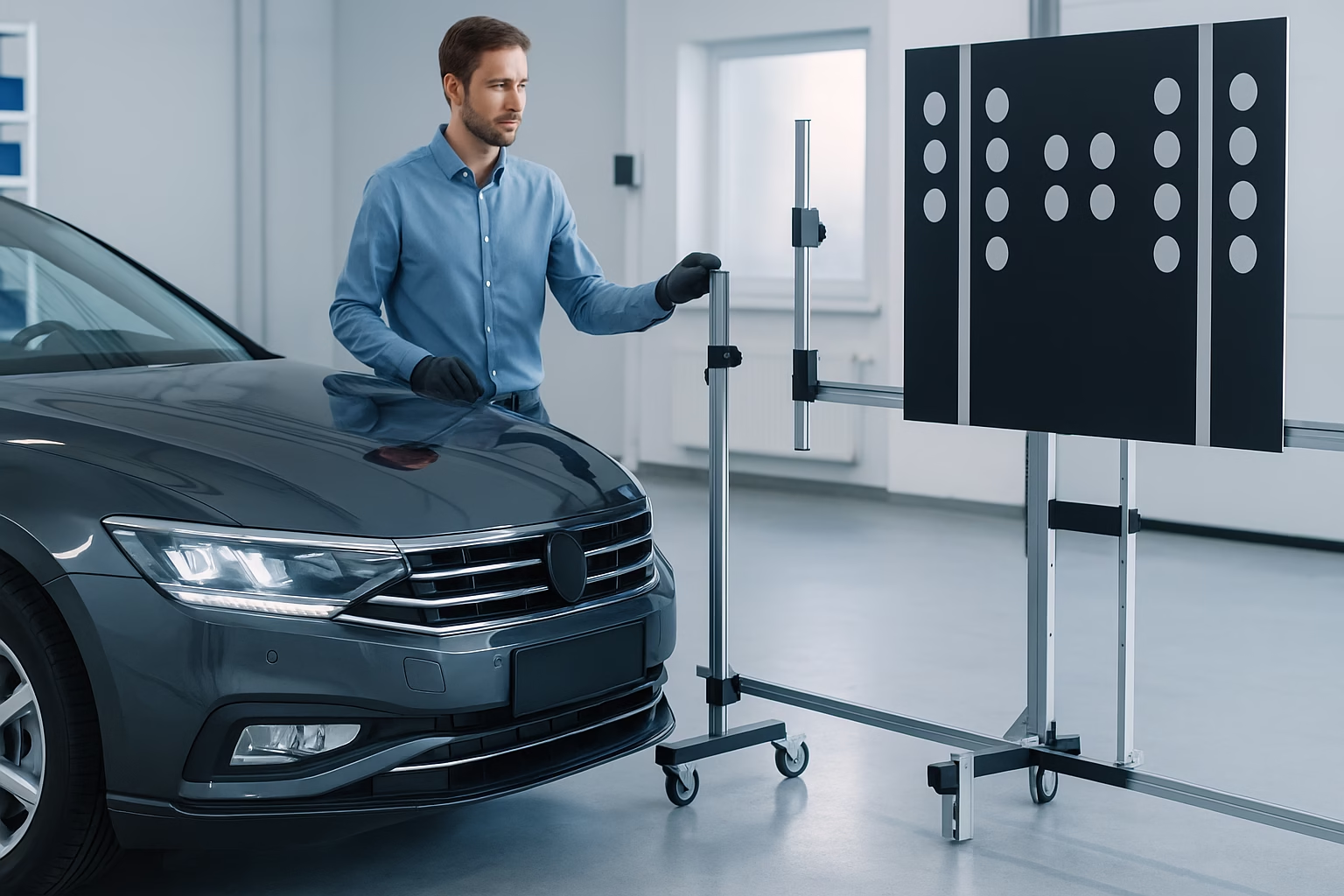Advanced driver assistance systems have evolved quickly in the last decade, but most calibration procedures still rely on technicians placing targets in front of vehicles and running alignment routines. As manufacturers incorporate more computing power, artificial intelligence and sensor fusion into their vehicles, a new era of self‑calibrating ADAS is emerging. Instead of requiring a workshop to mount a camera or radar and then perform a static or dynamic calibration, the vehicle itself can diagnose alignment issues, adjust its sensors and verify performance in real time. This shift will have far‑reaching implications for technicians, workshop workflows and the equipment they invest in.
Self‑checking and self‑calibrating sensors
Next‑generation sensors are being designed with built‑in self‑checking capabilities. Some camera modules now include multiple photodiodes and inertial measurement units that monitor the position and orientation of the lens relative to the vehicle body. Radar systems measure phase shifts across antenna arrays to detect misalignment. LiDAR units use internal reference targets to calibrate range and angle. These sensors continually compare their readings against expected values and can apply software corrections if they detect small deviations. If the deviation exceeds a threshold, the system can prompt the driver to schedule service.
Self‑calibrating systems also take advantage of sensor fusion. For example, if the camera and radar disagree on the distance to a vehicle ahead, the control unit can adjust the camera alignment slightly to match the radar. Vehicles equipped with high‑definition maps and GPS can determine their lateral position on the road and use this information to correct camera yaw. Machine learning models trained on millions of kilometres of driving data can predict what the camera should see given the vehicle’s state, allowing the system to compensate for slight misalignments without human intervention. These capabilities reduce reliance on static targets and improve resilience against minor knocks or temperature‑induced shifts.
Over‑the‑air updates and remote calibration
Another trend reshaping calibration is the use of over‑the‑air (OTA) software updates and remote diagnostics. Many new vehicles already download firmware updates that modify braking, steering and battery management. In the future, these updates will include calibration algorithms and updated sensor parameters. If a manufacturer discovers that a certain batch of windshields causes a known distortion, it could issue an update that compensates for that distortion without the car ever visiting a workshop. Similarly, the vehicle can send diagnostic data to the OEM or dealer, which can analyse sensor alignment remotely. In some cases the system can execute a calibration routine while the car is parked in the owner’s driveway, using built‑in cameras to look for known patterns on the street or in the surroundings.
Remote calibration capability has benefits and challenges. On the positive side, it reduces downtime and eliminates the need for specialized fixtures for routine recalibrations. Fleets can ensure their vehicles remain calibrated without bringing them into a workshop, improving safety and compliance. However, remote procedures require robust communications, secure data channels and strict verification of results. A misconfigured algorithm or a cyber breach could alter calibration parameters across thousands of vehicles. For this reason, regulators and manufacturers are developing standards for safe OTA calibrations and remote service authorization.
Impact on workshop processes and technician roles
As self-calibrating systems become more common, calibration will no longer revolve around aligning physical targets. Instead, workshops will focus on verifying sensor health, updating firmware, reviewing calibration logs and performing repairs when the self-calibration routines fail. Mechanical skills will remain important for replacing windscreens, bumpers or suspension components, but the calibration itself may be triggered by the vehicle rather than the technician. Diagnostic tools will need to communicate with the vehicle to read self-calibration status, error codes and sensor offsets. Workshops will also need robust Wi-Fi or network connections to perform software updates and transmit calibration data. The up-front investment may shift from physical boards and lasers to diagnostic subscriptions and training in software-driven systems.
Self-calibrating sensors do not eliminate the need for human oversight. Major collisions, structural repairs or aftermarket modifications may still require manual setup with precision tools. Calibration targets and alignment frames will remain relevant for older vehicles and for verifying that self-calibration has not drifted beyond design limits. Technicians will need to maintain dual competencies: understanding traditional static and dynamic procedures while also interpreting self-calibration data and using remote service portals.
Data management, cybersecurity and regulation
With more data being collected and transmitted, workshops must consider data privacy and security. Calibration logs may include detailed sensor data, GPS positions and driver behaviour information. This data must be stored securely and handled in accordance with privacy laws. Remote calibration requests could be spoofed if systems are not properly authenticated, leading to malicious modifications. Technicians will need to understand basic cybersecurity concepts and follow OEM procedures for secure connections. Regulators are likely to mandate standards for remote calibration protocols, record keeping and technician certification.
Conclusion
Self-calibrating ADAS will improve convenience and resilience, but they do not remove the need for qualified technicians. Instead of spending hours aligning targets, technicians will spend more time reviewing sensor diagnostics, applying software updates and advising customers about limitations of automated systems. Workshops that embrace these changes, invest in training and update their processes will remain essential partners in keeping vehicles safe as technology evolves.

Hiran Alwis is an automotive lecturer and ADAS specialist with over 15 years of experience in diagnostics, advanced safety systems, and technical training. He founded ADAS Project to help everyday drivers and workshop technicians understand and safely use advanced driver assistance systems.
